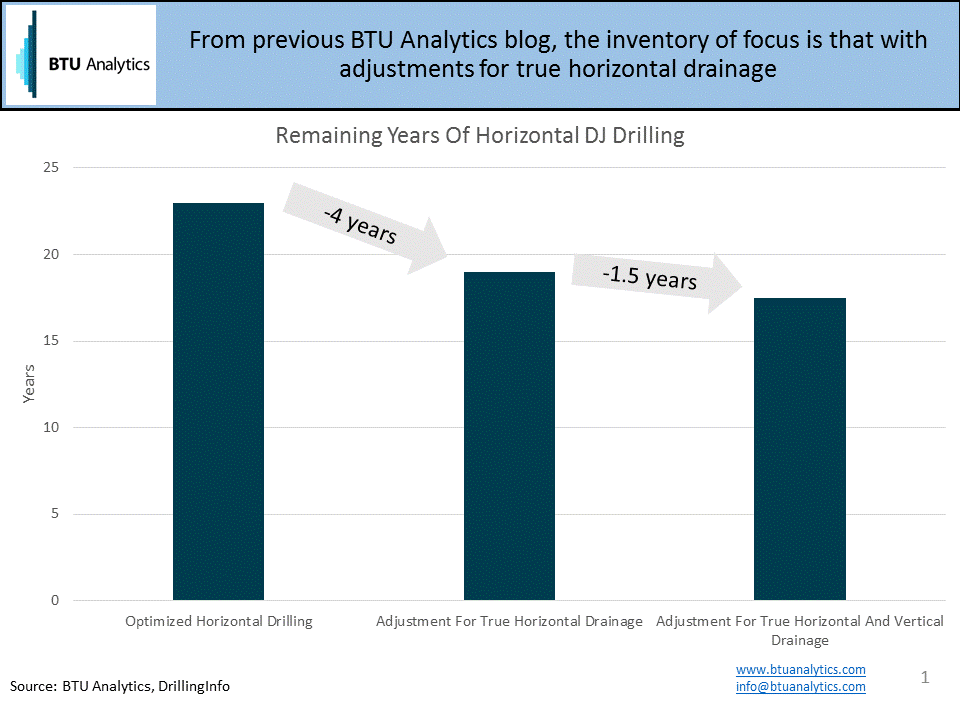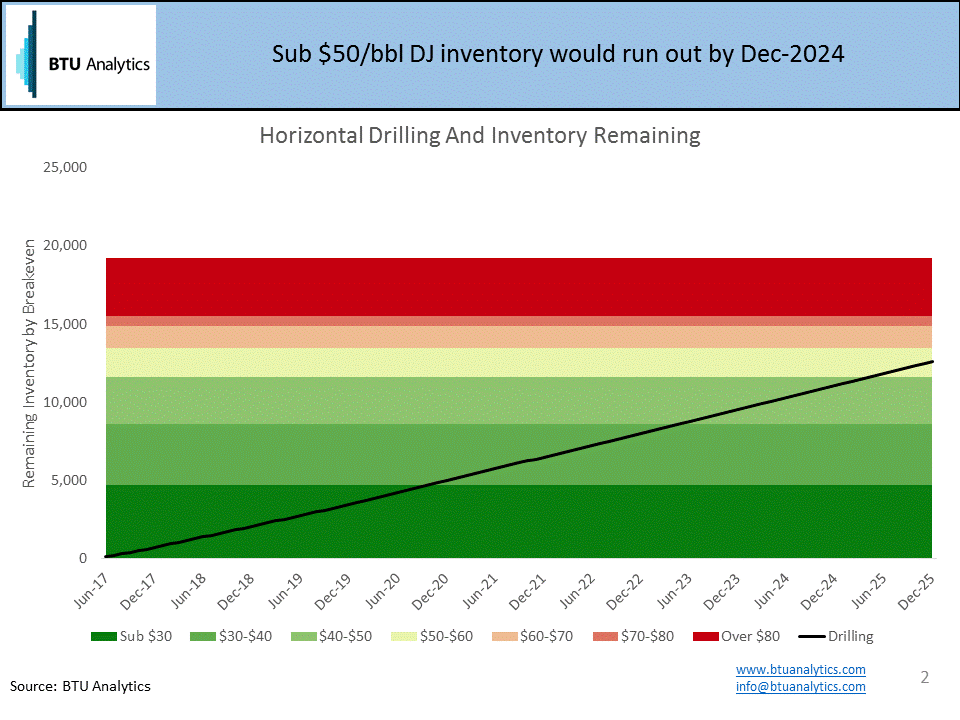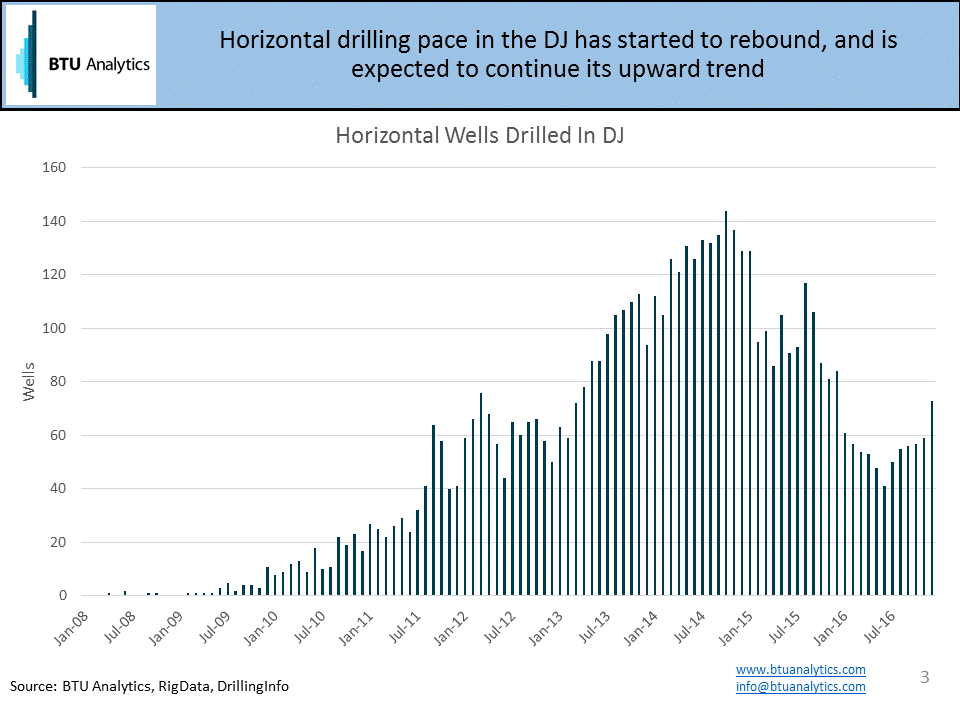In any given oil or gas play, a critical piece of information is how much drilling inventory remains. However, just because there is inventory doesn’t mean that producers will drill that inventory. Ultimately, the most important metric that matters when it comes to drilling is price, and the economics of the remaining inventory also influences where prices go. In a previous blog post, BTU Analytics discussed how much inventory is likely to remain in the DJ, after accounting for the way wells are positioned, as well as how much inventory is taken by legacy vertical drilling. This time, BTU Analytics has dug into the economics of this inventory, and how that will affect price.
First, a refresher from the previous blog: the remaining inventory for the DJ basin, in terms of the years of drilling remaining. Keep in mind that this is all inventory in the DJ, regardless of breakeven level.

Once we have this information on the number of locations, we can start to map out the breakeven prices of that inventory based on BTU’s breakeven grids, which use recently drilled wells as proxies for future well performance of surrounding locations.
At what point will we drill through the inventory of remaining locations that are economic in today’s price environment? Assuming the best wells are targeted first and using BTU Analytic’s current forecast for DJ Basin drilling, we would drill through all wells that breakeven below $50/bbl by the end of 2024.

To help put this drilling into context, the below graphic shows historical horizontal drilling rates. The drilling activity in this region is expected to continue its upward trend.

It’s also important to note that the remaining inventory by breakeven in the second graphic includes only locations that can be tagged out to a breakeven level. That excludes roughly 40% of the inventory in the first graphic, based on the fact that we have no recent well results to inform our view on well economics for those locations.
What could this indicate for prices? There are many factors that go into determining price, and inventory is just one. But all else equal, if there was no inventory that was economic at the current price, then prices would have to rise or drilling would fall off in the basin. The opposite is also true; if significant inventory works well below current prices, then prices could fall if supply growth starts to outpace demand growth.
To see more analysis on inventory, price forecasts, and breakevens, be sure to check out BTU Analytics’ E&P Positioning Report.








